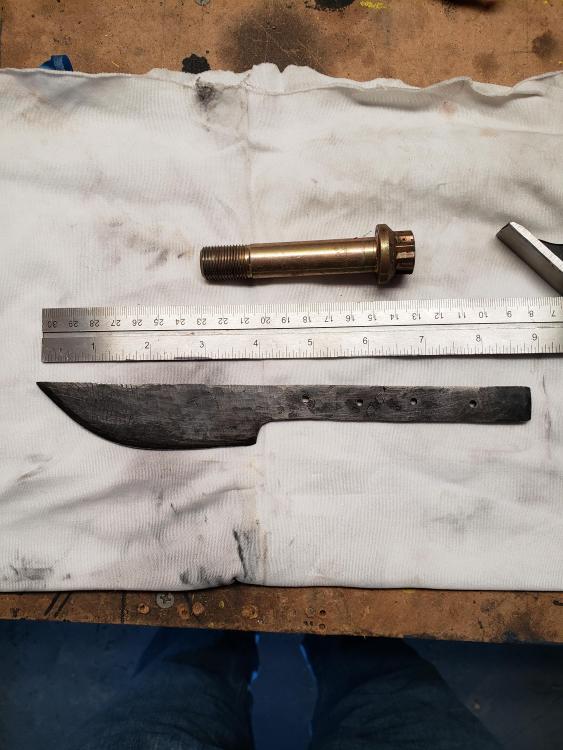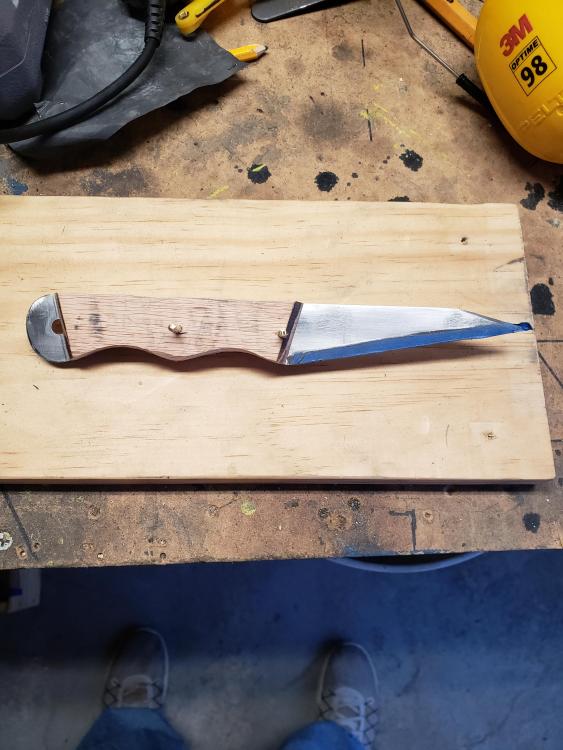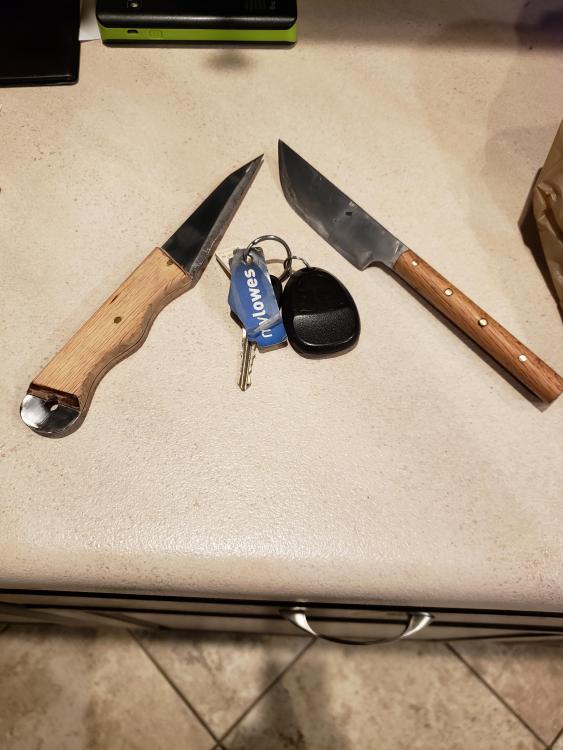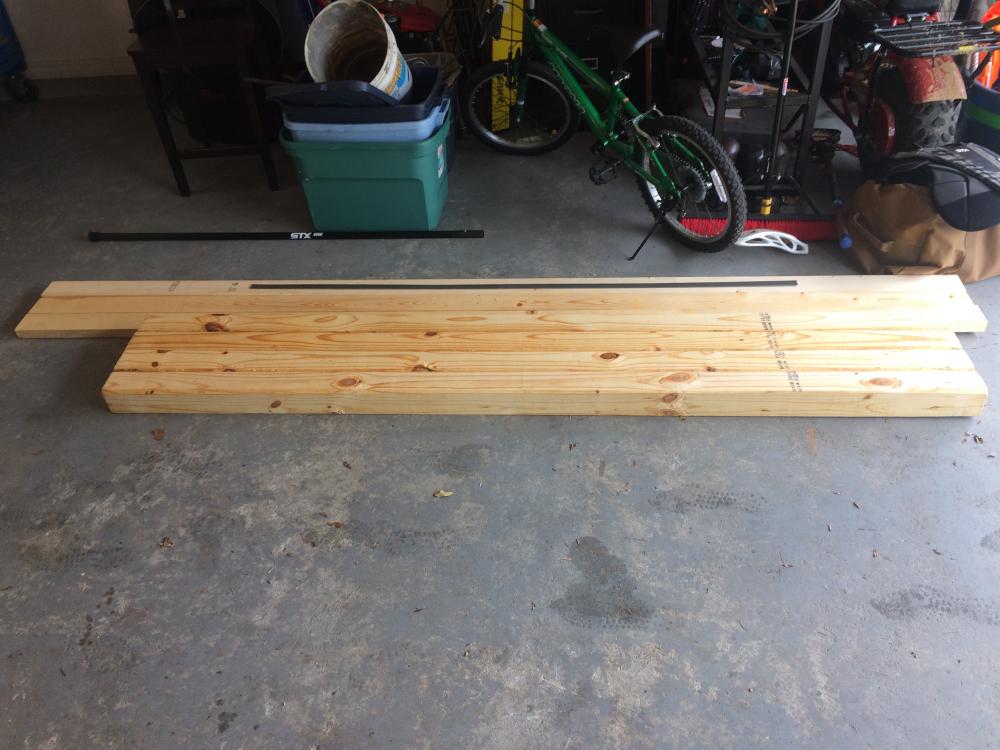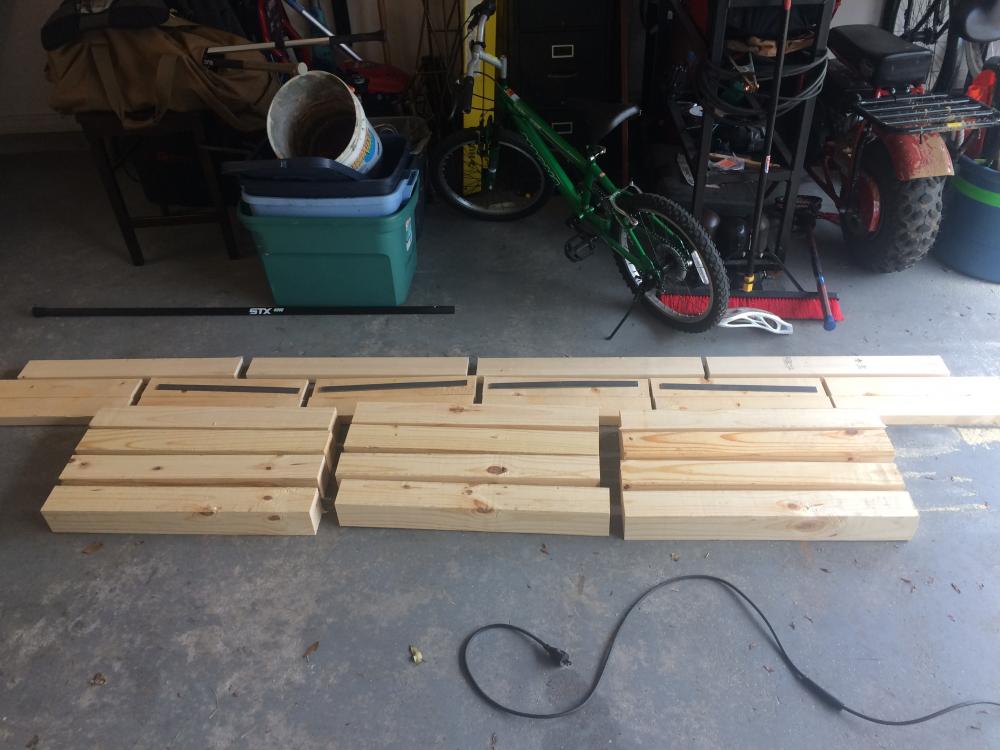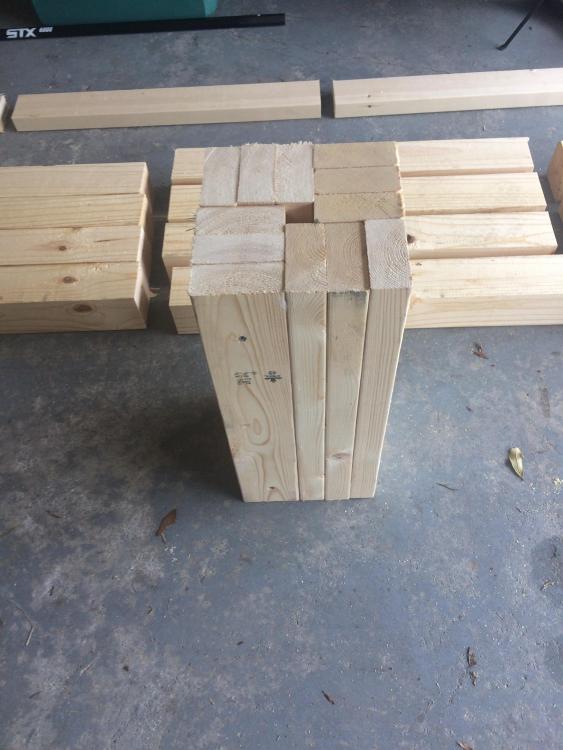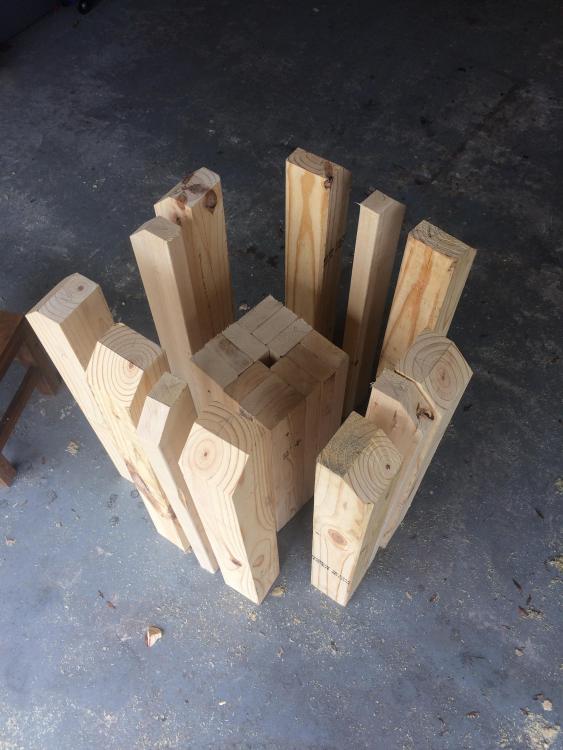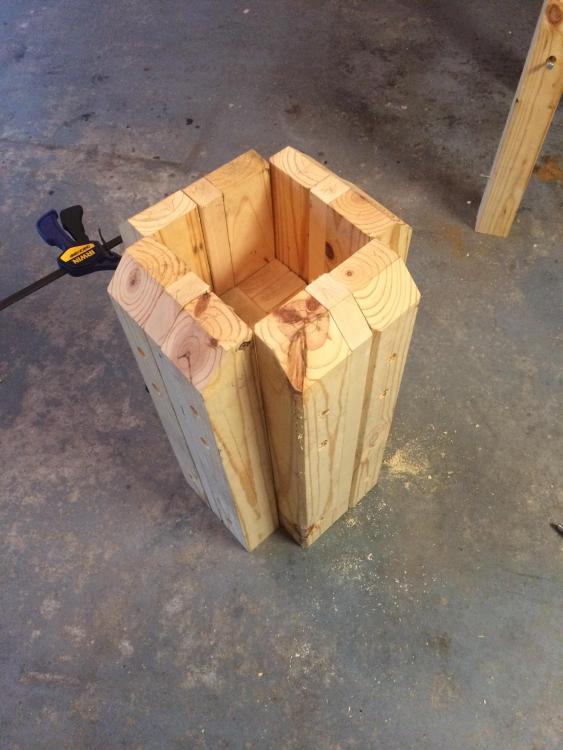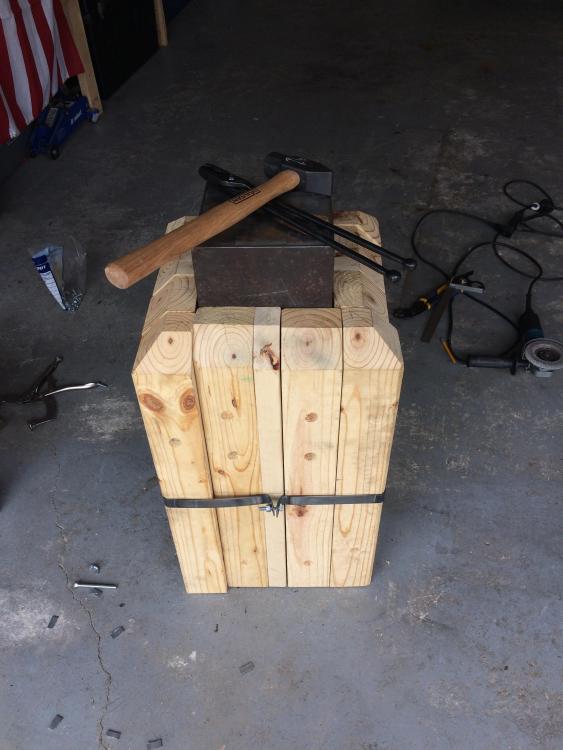-
Posts
6 -
Joined
-
Last visited
Profile Information
-
Gender
Male
-
Location
Pensacola, FL
Recent Profile Visitors
The recent visitors block is disabled and is not being shown to other users.
-
New to knife making
KC-130J replied to KC-130J's topic in Knife making Class General Class Discussion
Thank you guys for the input. This is why I did this post, input to better myself. I'm starting to understand the numbers now. From even further research, the requirement for these bolts list the carbon content that can vary from 0.32% up to 0.53%. Knowing that the bolts could be made from anything in between make me want to get some known alloy. I still have a bunch of these bolts laying around that I'd like to continue to practice on. Should I practice with known alloys or are these "maybe" alloys possibly feasible for lightly used blades? -
Greetings, So I am quite inexperienced to bladesmithing and have some questions that I hope the veterans can help me with. I have attached pictures of my 2nd and 3rd attempt at knifes and then both of them "finished". My 2nd attempt was just an attempt at a blade shape that I don't know what could be classified as. My 3rd attempt was an attempt at a paring knife. Both are made of aircraft grade bolts that are shown in the first picture. I stripped the cadmium plating with acid before forging. I've heat treated and tempered them and even did a test piece. The test piece was very hard to break (6+ hits on a small section sticking out of the vice with my forging hammer, with no bending ) and the grain structure looked good to my inexperienced eyes. I have the government specs for what the bolts should be made of. There are 5 different compositions that the contract requires and I'm starting to get confused because they seem to be pretty different types of steel. I looked the part number (5306-00-619- 5811) up on www.iso-group.com and it listed that the bolts can be made from 4140, E4340, 6150, 8735, or 8740. I've looked up all those steels on www.steelforge.com to look up their characteristics and I'm still wondering if it's worth my time. Finally, I've tried to search each composition with the "comp # and knife" to find opinions on the possible types of steel and still don't know if I should continue forging them. My overall questions are: With the range of steel that the bolt can be made of, is it worth my time? My (small) blades are holding and edge and are tough, is that a fluke? P.S. feel free to critique my early work so I can improve myself. --Max
-
A collection of improvised anvils
KC-130J replied to Charles R. Stevens's topic in Anvils, Swage Blocks, and Mandrels
That’s exactly what I was imagining. Since my utility dolly is presently being used as my oxy/acetylene dolly I was just going to add some wheels to one side and about 1/2” off the ground. Then all I have to do is tip it back onto the wheels and I’m not dragging 275 lbs of wood and metal around on the ground. -
A collection of improvised anvils
KC-130J replied to Charles R. Stevens's topic in Anvils, Swage Blocks, and Mandrels
Thanks for everyone’s insight. It seems like it’d be too much trouble to attempt to harden my mystery metal. Now I thought I’d show the stand that I made. In the first picture I started with (3) 10’ 2x4s, (4) 8’ 4x4s, a 6’ piece of 1” wide steel, a box of 3” screws, (24) 4” lag screws, and a coulple tubes of liquid nails. Next I cut (12) 20” long pieces of 2x4, (4) 28” long pieces of 2x4, (12) 28” long pieces of 4x4, and (4) 18” pieces of steel. I glued and screwed together the 20” long pieces of 2x4s. This is what my metal will directly sit on. I knocked a quick 45 degree cut on the top of each piece of 28” 2x4s and 4x4s. These are places around my 20” tall block to make a pocket for my steel to be supported laterally and make a wide base. Glued, counter sunk and predrilled for the lag screws to hold everything together. Finally I added corner 4x4s and bent the steel to bolt it all together. I may add another steel band on it in the future. Now all I have to do is add some wheels to it so I can move it around. -
A collection of improvised anvils
KC-130J replied to Charles R. Stevens's topic in Anvils, Swage Blocks, and Mandrels
I have a question about my improvised anvil. It's the above 8"x 8" x 12" hunk of metal. I plan to place it on end in an improvised stand and have began fabricate that stand. I also began to clean up the working end of my hunk-o-metal. When cleaning it up I found the piece to be quite soft. Soft enough to put descent marks in it with a 16 oz carpenter hammer. I'm wanting to try to harden it before I put it in my stand. Is haredning it as simple as heating the working end up and cooing the whole block with water from a hose? I have a propane burner built that I think will heat this piece. I've looked around for heat treating guides but I haven't found anything for "anvils". Any anvil hardening tips would be appreciated. Or advice on if it actually needs hardening. -
KC-130J changed their profile photo
-
A collection of improvised anvils
KC-130J replied to Charles R. Stevens's topic in Anvils, Swage Blocks, and Mandrels
This is my first post. I've been trying to get into blacksmithing for quite some time. I'm also cheap so getting the required tools has been holding me back. I came across a free piece of 8"x8"x23.5" piece of stock and couldn't pass on it. At approx. 440 lbs it was waaaaay too big for me to move by myself so I had it cut in half. Now I have 2 pieces of 8"x8"x11.25' steel and they're more manageable at about 220 lbs each . I don't know what it was used for so I don't think it's hardened. When I hit it with a hammer I get about 3 bounces out of it. I'm not sure if I'm just going to throw it on a stump or build something out of 4x4s to put it on. I have some 4x3x3/16 square tubing that I could use for legs as well. For this size of a piece am I good to use it on the side or should I stand it up? Is this a good piece for me to start beating some hot iron once I clean it up? Any input from everyone would be greatly appreciated.

